I did a lot of research before starting my garden here – and I’m still researching. But sometimes I also just try stuff like springtime plants I’ve grown in more northerly gardens. I’ve found that a plant’s natural habitat can make a big difference here at sea level in the Mediterranean. Plants from more mountainous regions tend to suffer in the sometimes hot and bright sunshine we have in March or April.
Tulips
Tulips have shown themselves to be a bit difficult here. Since there is a lot of ground to cover I had already decided in favor of robust “botanical” tulips that will go wild and keep spreading. But the sun can be so bright and hot in March and April that dark tulip colors bleach out almost immediately and the blooms don’t last more than two or three days. So far I tried Tulipa humilis “Odalisque”, humilis pulchella, polychroma, fosteriana “Flaming Purissima”, and batalinii/linifolia “Bright Gem”. The only ones that showed the expected color AND bloomed for more than a few days were the batalinii, planted in dappled shade between some shrubs.
I did some more research and found that Tulipa humilis, batalinii/linifolia and tulipa clusiana are naturally found in more mountainous regions, so it’s probably just too hot for them down here. I may try some Tulipa sylvestris, whitallii/orphanidea and saxatilis before throwing in the proverbial towel. Considering their natural habitat, they should do well at sea level.


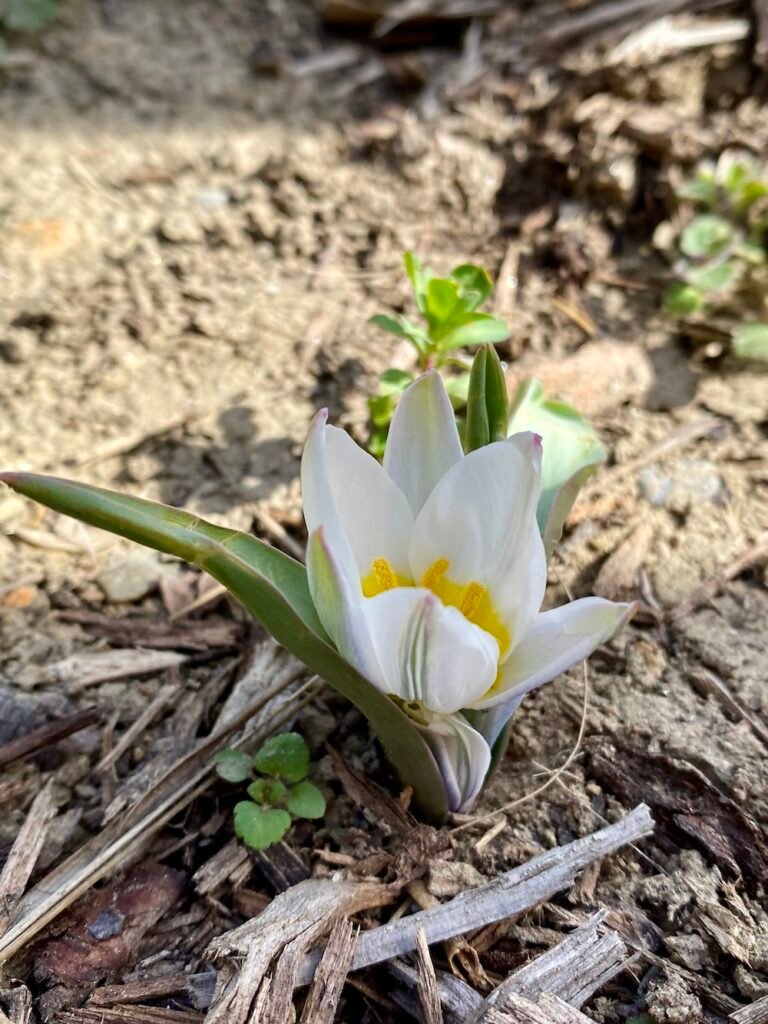
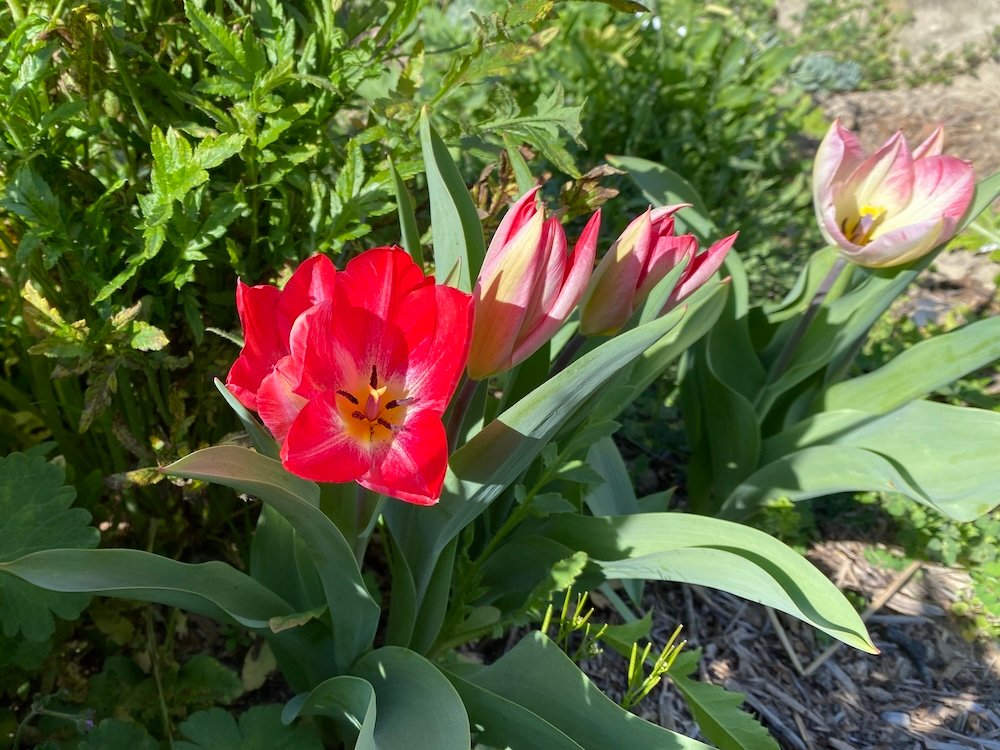
Narcissus
Narcissus work very well here and bloom for several weeks in March and April. I’ve planted native Narcissus tazetta canaliculatus and Narcissus jonquilla Martinette as well as Narcissus odorus Flore Pleno and am pretty happy with all of them – although Flore Pleno tends to come back with smaller and less filled flowers. All my narcissus are scented and can perfume an entire room.
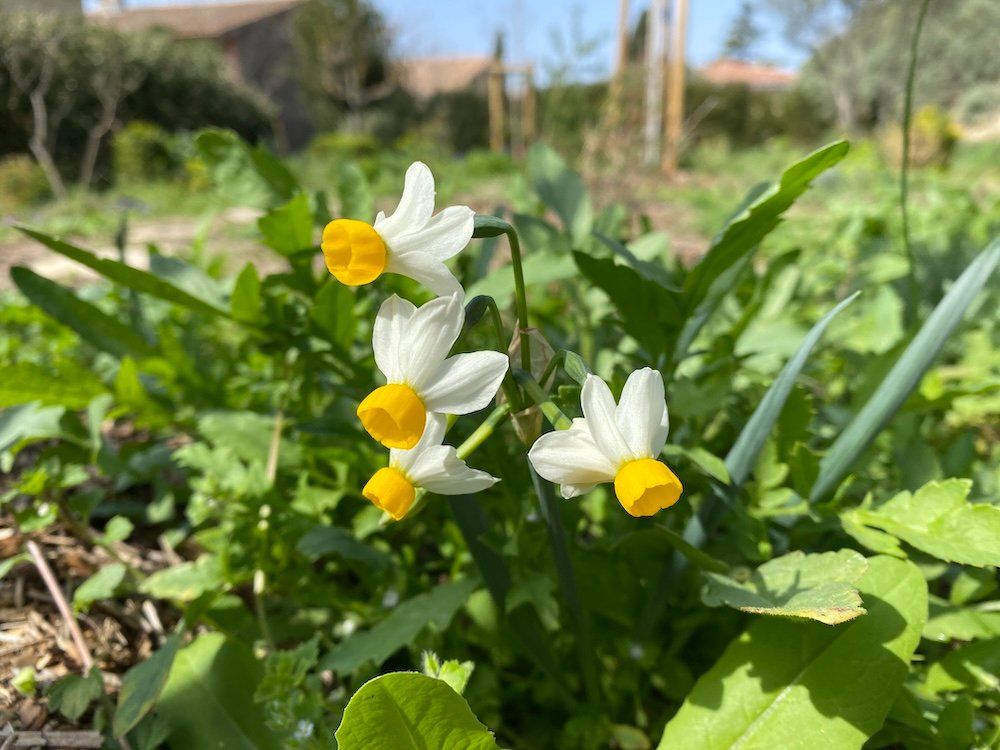
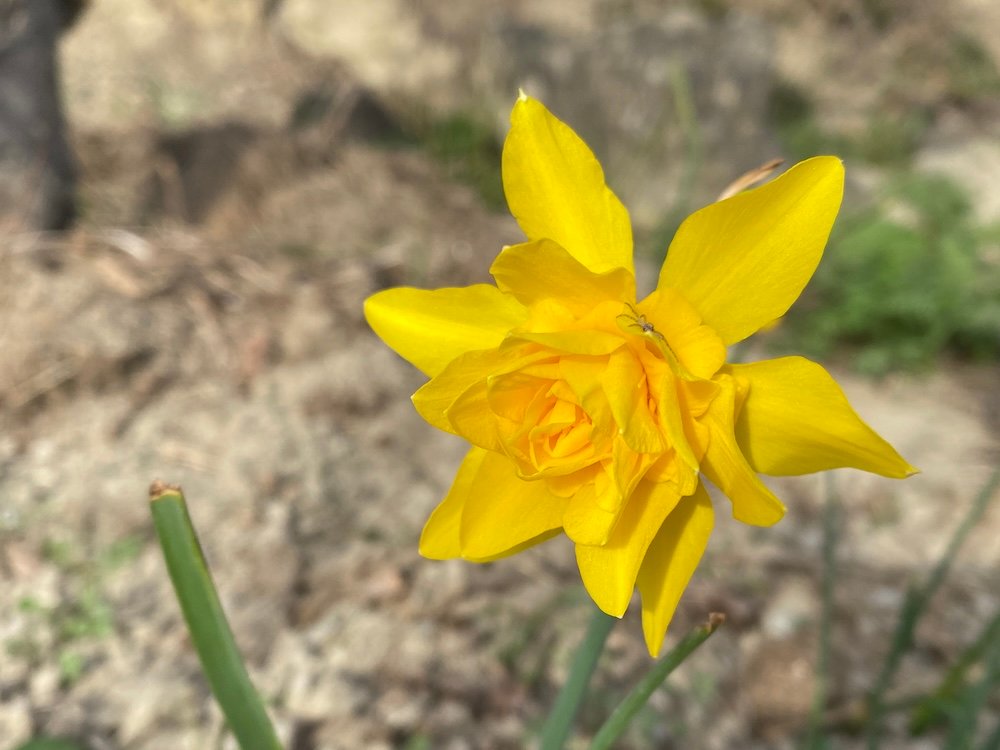
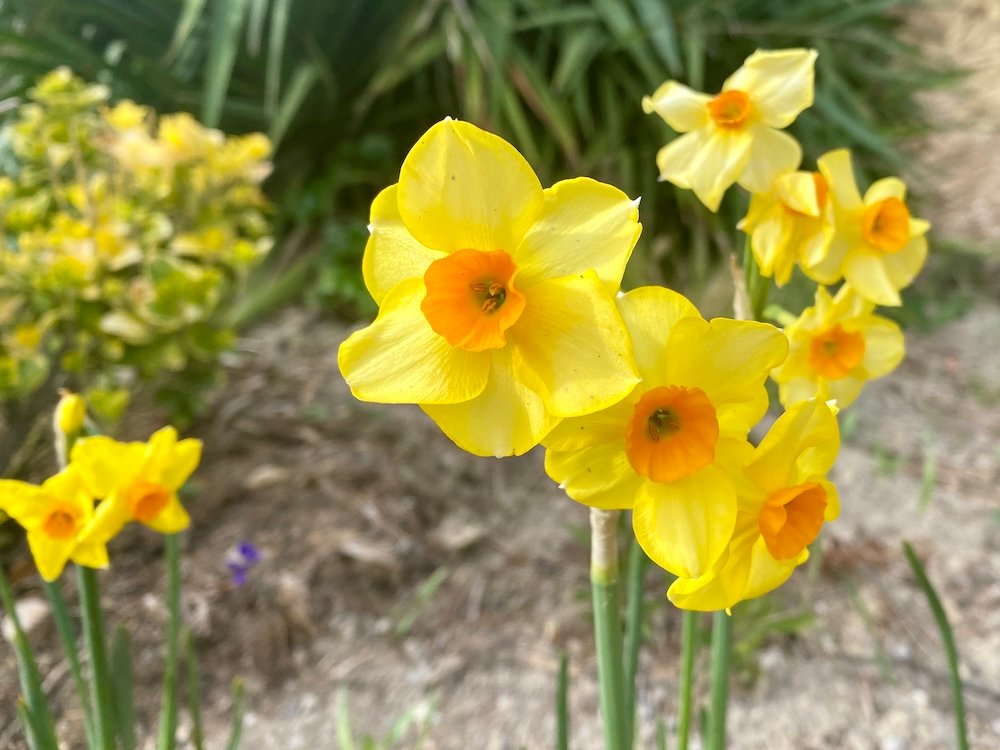
Allium
Looking for a Mediterranean substitute for the much-missed Swiss Allium ursinum I planted Allium unifolium, neapolitanicum and triquetrum – none of which come close, unfortunately. But they are pretty and stems as well as flowers can be added to salads or fromage frais for a bit of a garlicky touch. I want to try some more native varieties like Allium moly and roseum.
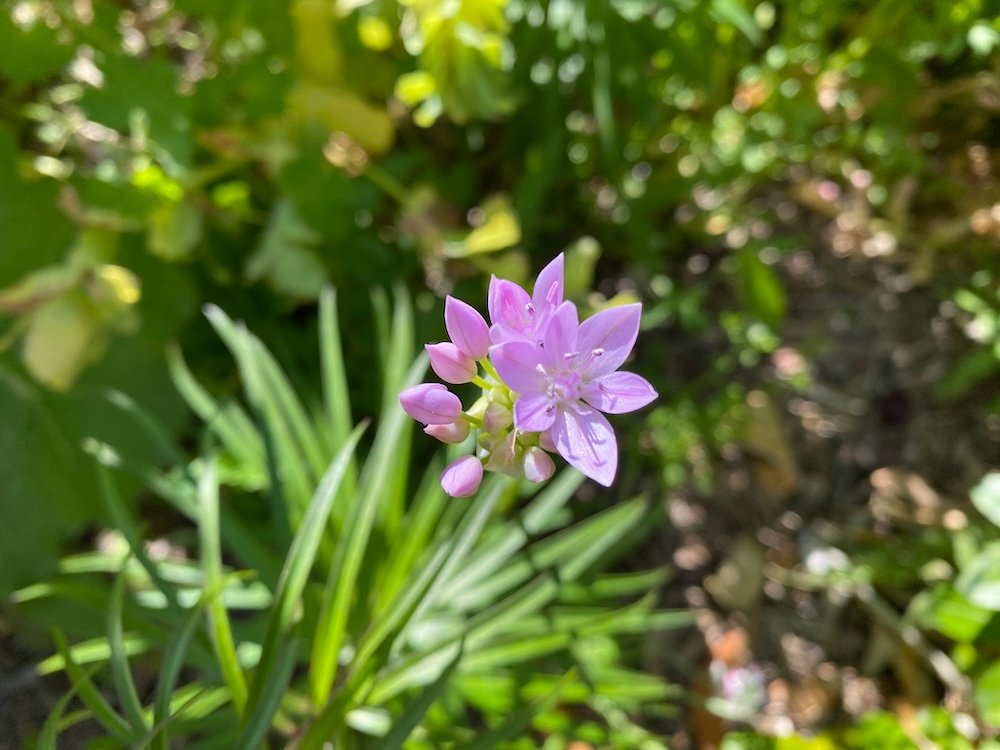
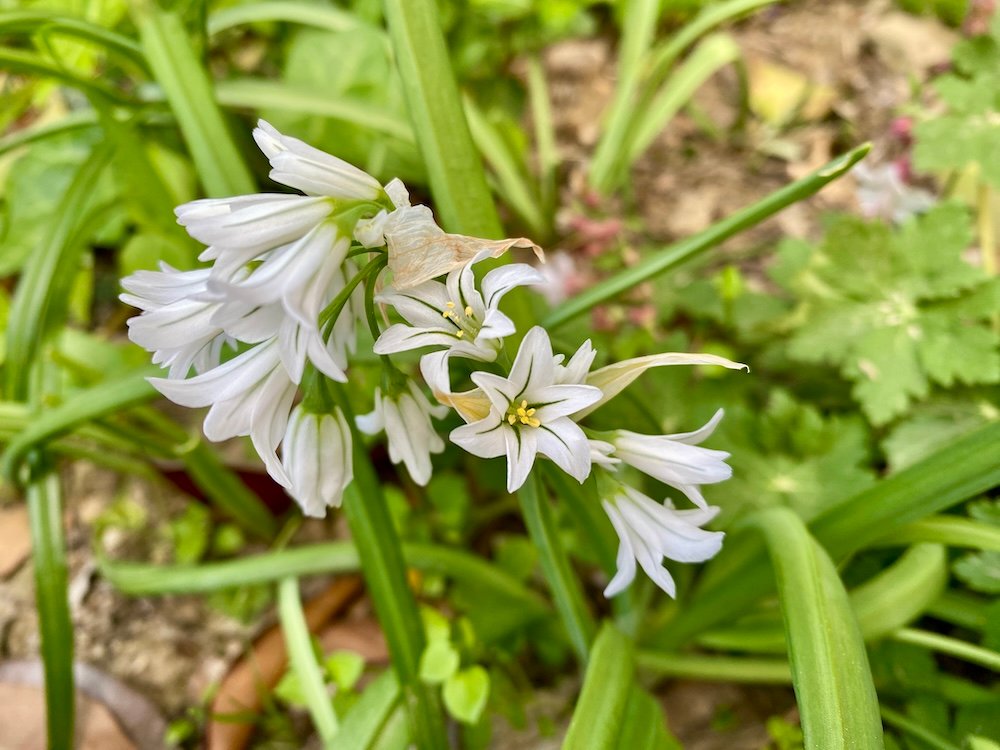
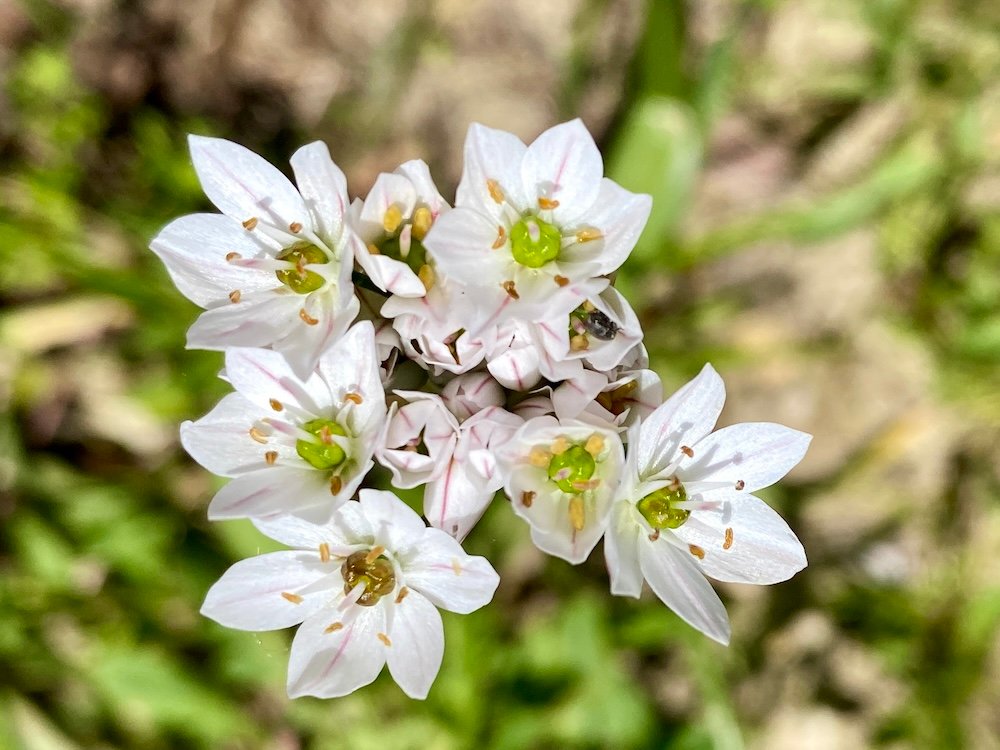
Small bulbs: Crocus, Ipheion, Muscari armeniacum
Crocus are easy. Although most of them come from more mountainous regions, they bloom very early in February and March when the sun isn’t that hot yet. They are an early favorite with bees and, over time, form larger and larger groups. Crocus tommasinianus roseus does ok, Crocus chrysanthus, minimus, luteus/flavus and sieberi should do even better.
Ipheion uniflorum are small but very long-lasting flowers from South America that have naturalized in other regions of the world. They bloom without pause from early March into April. I’ve planted the regular light-blue variety and want to add some more vivid colors like Wisley Blue, Charlotte Bishop, Froyle Mill, etc.
Muscari are notorious for their capacity to spread all over the garden but I think that they will be quite manageable by cutting off the faded blooms wherever there is enough of them. For the beginning I planted lots of inexpensive, regular Muscari armeniacum but I would like to try the native and wonderfully weird-looking Muscari comosum as well as purple-green, banana-scented Muscari macrocarpum.
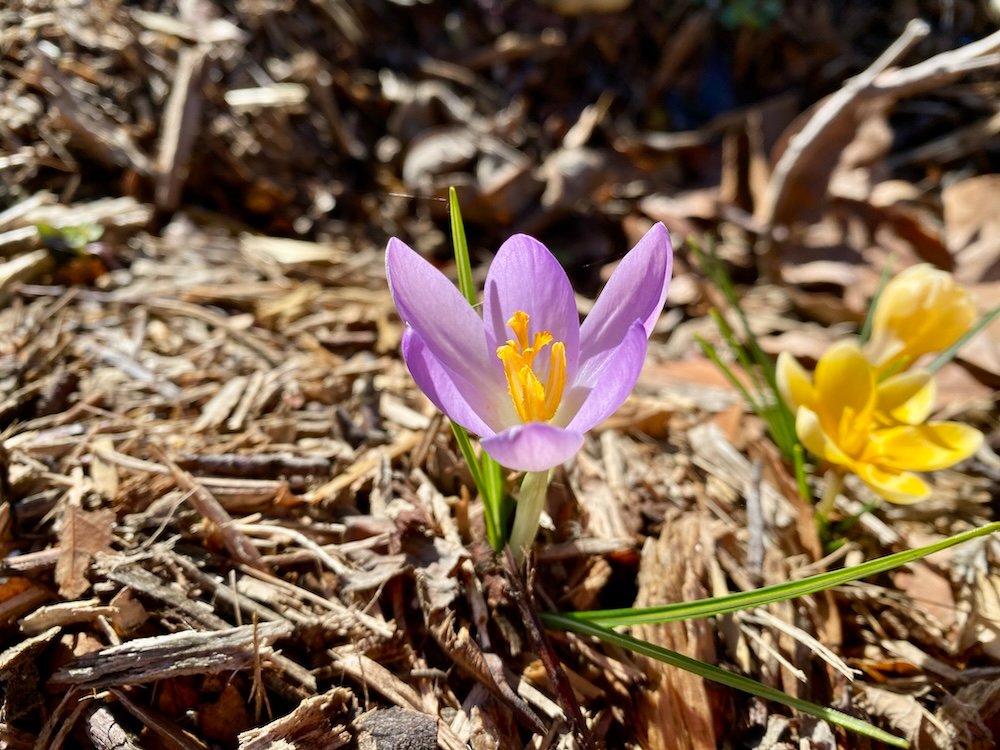
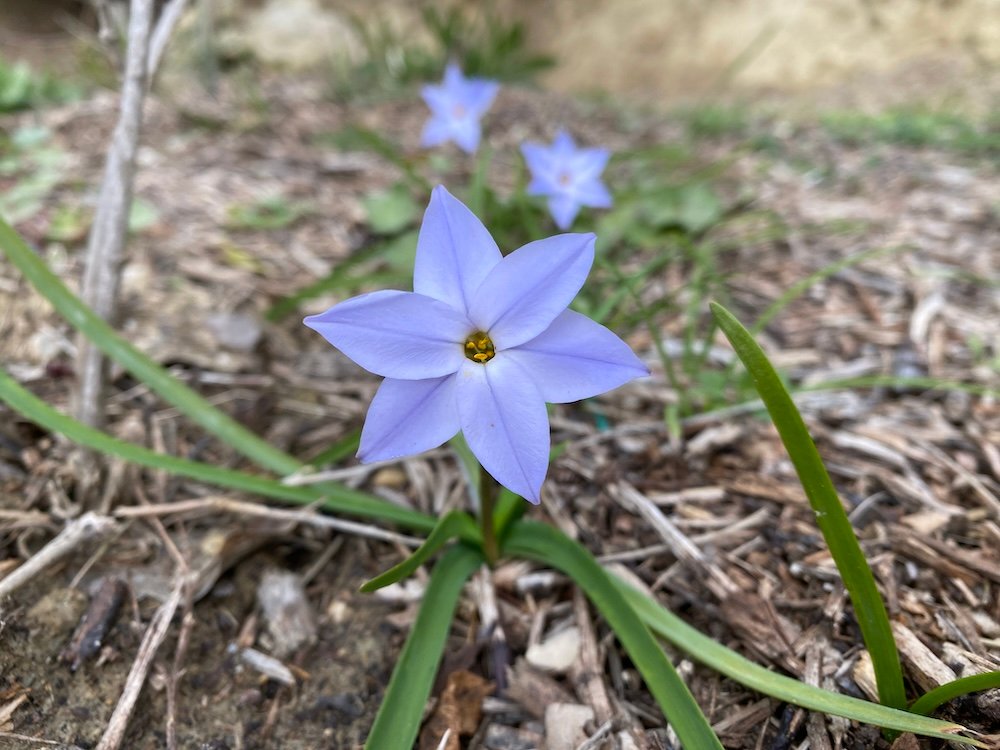
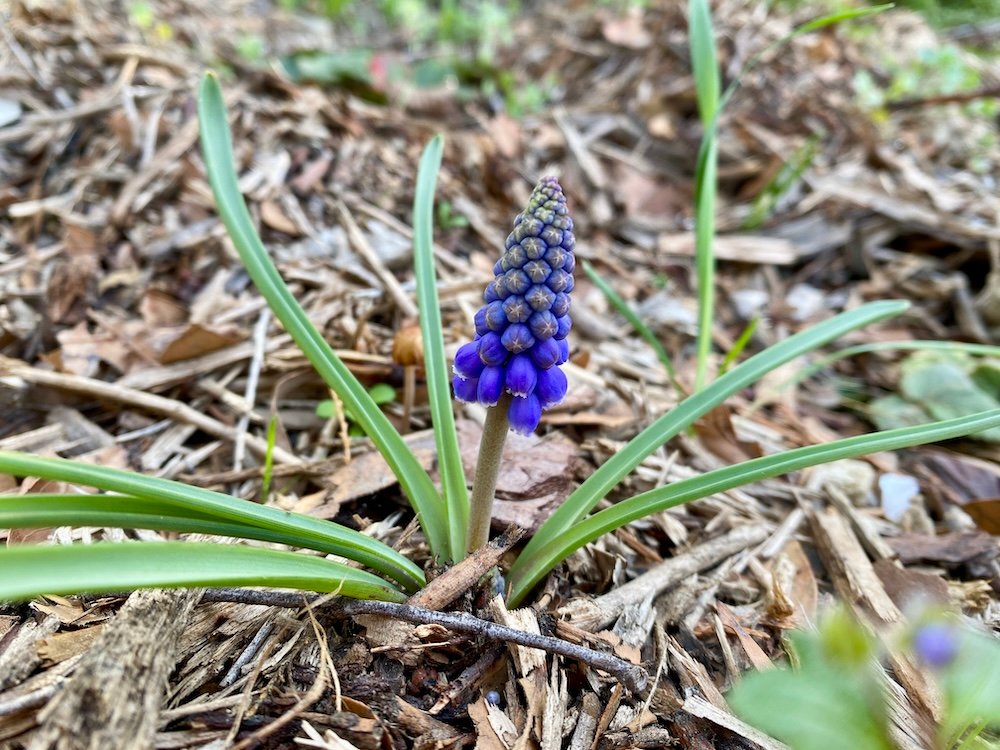
Anemones
Both Anemone blanda and Anemone coronaria work fabulously here – which is why I dedicated a whole article to them.
On the Shopping List for 2025
On the list for next spring are:
- Tulipa sylvestris, whitallii/orphanidea and saxatilis
- Narcissus tazetta and jonquilla
- Ipheion uniflorum Wisley Blue, Charlotte Bishop, Froyle Mill, etc.
- Crocus chrysanthus, minimus, luteus/flavus, sieberi should do better.
- Hyacinthoides hispanica
- Scilla peruviana, bifolia, mischtschenkoana
- Gladiolus italicus, communis/byzantinus
- Allium neapolitanicum, moly, roseum
- Muscari comosum, macrocarpum
Leave a Reply